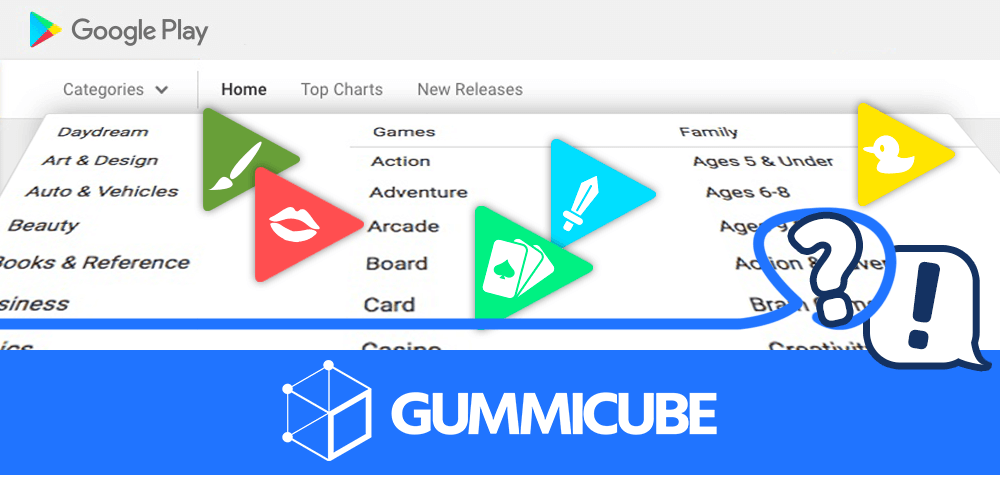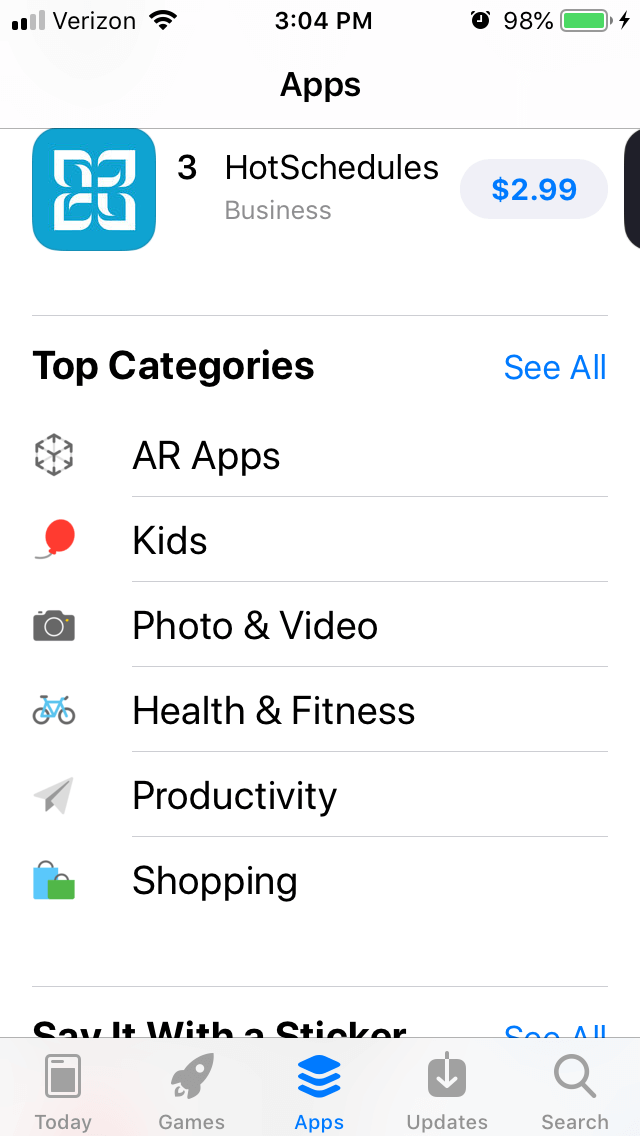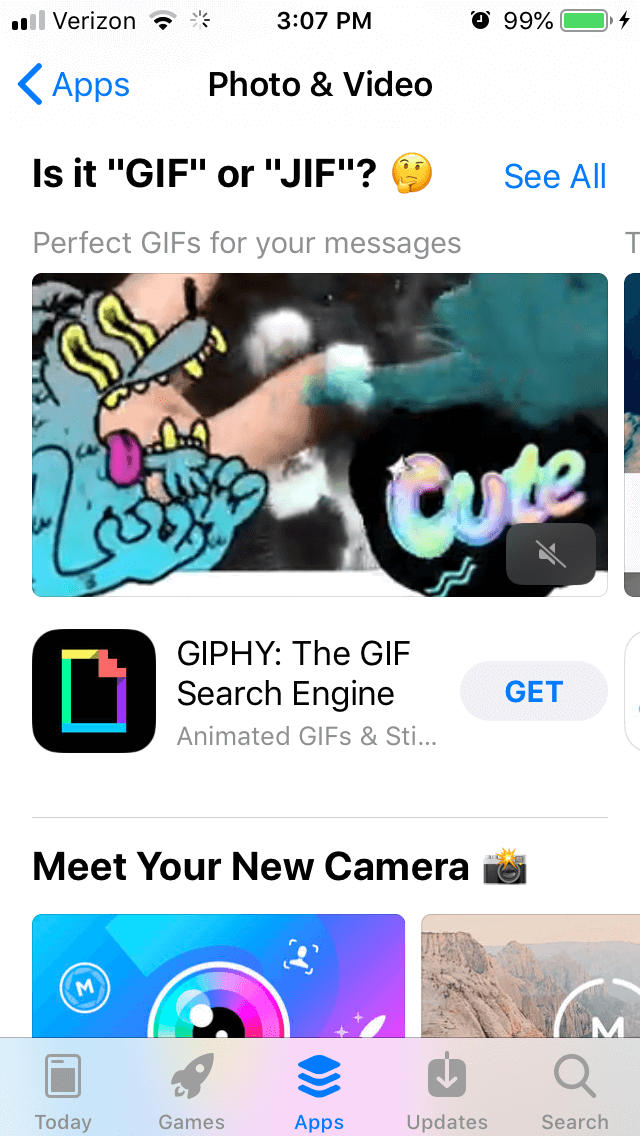
5 Best Practices for Apple Search Ads
Posted on July 3rd, 2024
Are you leveraging Apple Search Ads the right way? Take a look at these recommendations to optimize your paid campaigns and target the right users.

The App Store environment is frequently shifting as users find new ways to search for apps and new functions are added. With the constant changes, one might wonder what rankings still matter – are category rankings important, or are they a relic of a bygone era of the App Stores? The differences in displays of the Apple App Store and Google Play Store, and how they have changed over time, are an important piece to consider in an App Store Optimization strategy.
In the early days of the App Store, Apple prominently displayed apps based on rankings in their categories. Users browsing the App Store could instantly see a large list of apps that were the most popular in a given category. This was great for an app’s visibility, so any developer would have been thrilled to have an app rank in the top of their category. The app stores have changed since then, and the categories are no longer featured front and center. Instead, the app stores showcase curated content and a variety of sections, with “categories” being de-prioritized. These days, it’s more important for an app to rank within keywords, as the majority of app discovery and downloads come from search. Marketing tools such as Search Ads are also important for improving discovery, making category rankings less significant. However, while category rankings may not be as essential as they once were, they do still serve a purpose.
There are a few ways an app’s category ranking comes into play on the App Store for iOS devices. While browsing apps, users will find an array of suggestions for popular terms, before being able to look at apps by category. Within those categories are multiple subcategories, allowing an even more specific view.  For instance, users browsing the “Photo & Video” category will see “This Week’s Favorites” and “Apps We Love,” along with a list of photo apps, editing apps, video apps and even gif apps under the header “Is it ‘GIF’ or ‘JIF’?” (For the record, it’s “GIF.”) Even the top apps, paid and free alike, aren’t listed until much farther down. With all these sub-categories and sections, the individual apps’ rankings within the category as a whole may seem unimportant. There’s no longer a single “Top 10” list that users can see to pick the best from; instead, there’s a wider variety of options, leading to a greater array of “top-ranked” apps.
For instance, users browsing the “Photo & Video” category will see “This Week’s Favorites” and “Apps We Love,” along with a list of photo apps, editing apps, video apps and even gif apps under the header “Is it ‘GIF’ or ‘JIF’?” (For the record, it’s “GIF.”) Even the top apps, paid and free alike, aren’t listed until much farther down. With all these sub-categories and sections, the individual apps’ rankings within the category as a whole may seem unimportant. There’s no longer a single “Top 10” list that users can see to pick the best from; instead, there’s a wider variety of options, leading to a greater array of “top-ranked” apps.  While this may make it seem like category rankings are irrelevant for users browsing the App Store, it is still important when users view the apps themselves. If a user clicks on an app and sees it’s ranked low in its category, or even unranked, they may be more hesitant to download it. Why should they download a low-ranking “Education” app when there are over a hundred options with better reviews available? Similarly, if a user clicks on an app even while browsing and sees it’s in the top 10 for its category, that will indicate that it’s popular enough to see a large number of downloads, and may be worth installing. Even without reading the reviews, the ranking alone implies the app’s merit. From there, it’s up to the app’s creatives and description – vital components of App Store Optimization – to convert the user by demonstrating the app’s features and value. The category ranking alone won’t make the sale, but it will certainly help. While category ranking is still important, Apple’s move towards curated content, Search Ads and search discoverability make organic ASO an even more important factor than in previous years.
While this may make it seem like category rankings are irrelevant for users browsing the App Store, it is still important when users view the apps themselves. If a user clicks on an app and sees it’s ranked low in its category, or even unranked, they may be more hesitant to download it. Why should they download a low-ranking “Education” app when there are over a hundred options with better reviews available? Similarly, if a user clicks on an app even while browsing and sees it’s in the top 10 for its category, that will indicate that it’s popular enough to see a large number of downloads, and may be worth installing. Even without reading the reviews, the ranking alone implies the app’s merit. From there, it’s up to the app’s creatives and description – vital components of App Store Optimization – to convert the user by demonstrating the app’s features and value. The category ranking alone won’t make the sale, but it will certainly help. While category ranking is still important, Apple’s move towards curated content, Search Ads and search discoverability make organic ASO an even more important factor than in previous years.
Specific categories are a little easier to search through on the Google Play Store. From the Home menu on the Google Play mobile store, the “Categories” tab sits right between “Top Charts” and “Editors’ Choice,” remaining in a visible position. From there, users can scroll through the range of categories. Each section offers recommendations based on user activity, as well as a selection of apps for various purposes, such as guitar apps and apps for sleeping better.  However, what makes category ranking matter is right above those. There’s a large green “Top Charts” button that shows the rankings within that category.This includes “Top Free,” “Top Grossing,” “Trending,” and “Top Paid.” The relative ease of access to apps within their Play Store category have more of an impact than the Apple App Store. The top six within each subcategory are made instantly visible to any users browsing the category, so they’ll know which ones are popular. Being in the top for any category can make a big difference for an app’s visibility within the category. Users simply browsing the store are more likely to click one of the first apps available, rather than click “See More” to continue searching. On average, and with the Apple App Store, though, search remains a far larger driver of app discovery. This can vary from app to app- Google’s new metrics separating Explore and Search metrics will let a developer know where they are being found, and where they are getting downloads. Users browsing by category may have an easier time finding the top-ranked apps, but they’re still usually more likely to discover them through organic search.
However, what makes category ranking matter is right above those. There’s a large green “Top Charts” button that shows the rankings within that category.This includes “Top Free,” “Top Grossing,” “Trending,” and “Top Paid.” The relative ease of access to apps within their Play Store category have more of an impact than the Apple App Store. The top six within each subcategory are made instantly visible to any users browsing the category, so they’ll know which ones are popular. Being in the top for any category can make a big difference for an app’s visibility within the category. Users simply browsing the store are more likely to click one of the first apps available, rather than click “See More” to continue searching. On average, and with the Apple App Store, though, search remains a far larger driver of app discovery. This can vary from app to app- Google’s new metrics separating Explore and Search metrics will let a developer know where they are being found, and where they are getting downloads. Users browsing by category may have an easier time finding the top-ranked apps, but they’re still usually more likely to discover them through organic search.
Category ranking is still important on both stores, albeit in different ways. The hard part then is getting an app’s ranking up within its category. Given the thousands of apps available on each store, this can seem like a herculean task. App Store Optimization (ASO) can help an app on its journey to the top. A strong ASO strategy can improve an app’s rankings for keywords, reach more users and increase its conversion rate. The greater an app’s download volume, the better its ranking within its category, so ASO for organic downloads and supplementary paid marketing can help an app compete. Additionally, category rankings are far from the most important aspect of discovery. Apple states that around 65% of app discovery comes from search, and marketing tools such as Search Ads play a large role. App Store Optimization can improve visibility within a multitude of searches, making more of an impact than ranking in a single category. Once an app does appear for a user, whether in a top-ranked list or through search, the next challenge is converting users. The improved visibility from a high ranking will bring potential users to the app page, but strong creatives and a well-written description will help turn those viewers into active and engaged users.
The short answer is “yes.” Category ranking does still matter on both the Apple App Store and Google Play Store. However, the ways that they make an impact can differ between the stores, whether it’s for improved visibility or for gaining user trust. It also no longer matters as much as it once did, and plays a smaller role compared to search and marketing. No matter which store an app is on, App Store Optimization is still essential for improving its rankings. With a solid ASO strategy, your app will have an edge over the other competitors in its category. Want more information regarding App Store Optimization? Contact Gummicube and we’ll help get your strategy started.

Are you leveraging Apple Search Ads the right way? Take a look at these recommendations to optimize your paid campaigns and target the right users.

Ghostly happenings are among us... and in your app listing too? If you aren't leveraging the power of app seasonality to make relevant tweaks to your store listing you're leaving precious engagement and conversions on the table.

Developers on the iOS App Store should plan in advance of the upcoming Holiday Schedule to allow enough time for apps to get approved during the busy holidays.